All About Icelandic Fleece
Icelandic Wool Has Unique Propertie
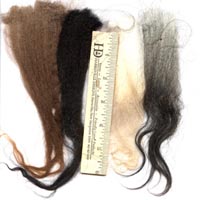
The Icelandic fleece is perhaps the world's most versatile fiber. Handspinners wishing to spin a wide range of yarns for an even wider range of uses from a single fleece, will be delighted to discover this fiber. Its versatility suggests many projects and uses. The Icelandic fleece is dual coated, meaning that it has a long outer coat called tog and a fine inner coat called thel.
The tog is classed as a medium wool with a 50-53 spinning count, or 27 microns. It is wavy with little or no crimp and is therefore perfect for worsted spinning. Pure tog yarns make excellent warp that stands up to the weaving process without breakage.
The thel or undercoat is three to four inches long with an irregular crimp. It is fine, soft as cashmere and lustrous. With a 65-70's count, or 20-21 microns, it is classified as a fine wool. Lofty when spun, it makes a luxurious warm woolen yarn when used for next to the skin garments.
The average adult fleece weights five to seven pounds, with a 29% shrink. The locks range from eight to ten inches from a seven month fleece (Fall shorn) to eighteen inches if left to grow for one year. Because eighteen inch fiber would be difficult to deal with, most sheep are sheared twice a year.
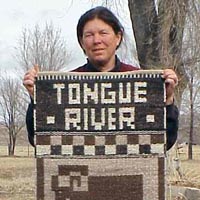
Icelandic sheep have the widest color range of any breed, including many shades of white, gray and black, and a variety of browns. Many fleeces have multiple colors, or inner and outer coats of different colors. For more info on the colors, see a href="/resources/articles/color-genetics-in-icelandic-sheep">Color Genetics in Icelandic Sheep
Historically Icelandic fiber was separated for most uses. The tog was made into twine, rope and embroidery thread. It was woven into canvas sails, saddle blankets, and tapestries. Fine tog was used like mohair and knitted into lacy shawls, used for embroidery work and made into durable items like aprons. Today it is regarded as a perfect fiber for woven rugs. Thel was used for fine, soft, next-to-the-skin garments, including baby clothes, fine worked mittens, and underwear. The two coats when spun together were used for fisherman's sweaters, socks, and caps.
Preparation of Wool for Spinning
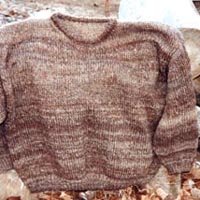
Preparation of a fleece for spinning can be done in several ways. The easiest way if you have limited tools is to flick card the tips (uncut ends). Do not flick the cut or butt end of the lock or much of the thel will be lost. Simply tease open the cut end with your fingers and spin from this end. Spinning from the lock feeds the two types of fibers evenly, and at the same time, reserves the interesting color variations in the lock. This method produces semi-worsted yarn.
Viking combs (those with one row of teeth) were designed to be used with this fiber; such single pitch combs must be used, since a double pitch comb (with two rows of teeth) will catch and hold the fine thel fiber as waste.
The fiber can also be prepared on a drum carder. Use a fine carding cloth with long teeth for best results. The locks must be well teased open before carding to prevent the long fibers from wrapping around the licker-in. Locks are usually too long to be carded with hand cards.
Two Spinning Methods

The two coats need not be separated, and are usually spun together by today's spinners. However, if separation is needed, the tog and thel can be drawn apart in the following ways.
The simplest is to take a washed lock and pull on the tips of the tog end while gently holding the cut (butt) end in the other hand. The tog pulls out fairly easily.
Another method is to lay the lock on the teeth of a hand card placed face (teeth) up. The long fibers can be pulled out while the short thel remains held fast by the teeth of the card. If the tog that has been pulled out has been kept aligned it can then be easily spun worsted. The thel may need more work to relieve it of its shorter tog fiber. If put on a surface of contrasting color the tog fibers can be seen and removed from the thel.
If the two coats are spun together, it is best to spin the yarn with a very low twist. If spun this way the yarn will be relatively soft, even though it contains both kinds of fiber.
Icelandic fiber, with its low amount of crimp, is easy and fun to spin. Even beginning spinners can achieve a uniform yarn. The lack of crimp produces a relatively inelastic yarn that is best used for garments that are designed to drape. These yarns will make a fabric that will not stretch out of shape.
Fiber Makes for Easy Felting
For felting, Icelandic fiber has no equal. It felts fast in twenty minutes or less. The delight in felting is that a project can be completed in twenty minutes to an hour. This fiber also makes excellent knitted-then-felted items such as hats and slippers.
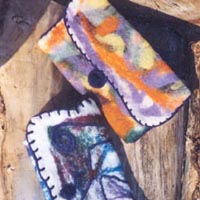
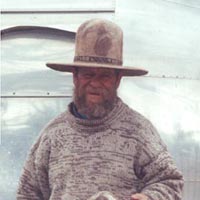
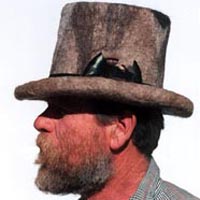

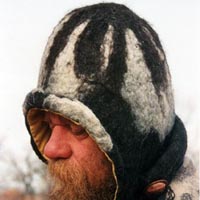
Icelandic fleece is truly a spinner/weaver/felter/fiber artist's dream. With its versatility and natural color, it's hard to beat for a great fiber experience.
Washing Icelandic Fleece
For information on washing Icelandic fleece, see How-to Wash Your Fleece by Frances Smith.